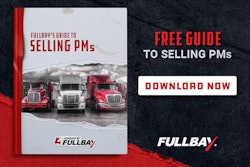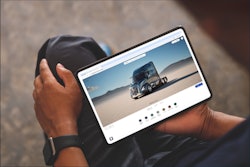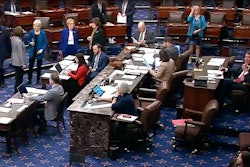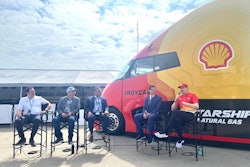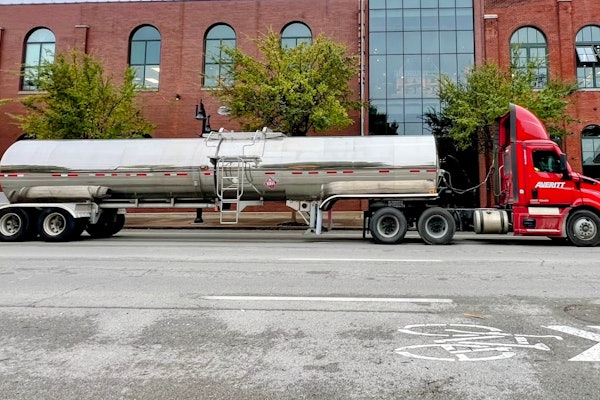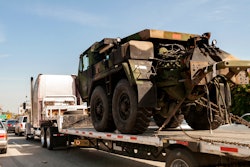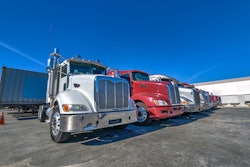What trucking teaser headline gets you to read an article? There has been a lot of news and social media coverage of ACT EXPO 2025. Justifiably so. This event has become arguably the best annual industry showcase of freight industry perspectives. If not the best than perhaps the largest. And isn’t visibility the whole point of exhibitions and conferences?
Whatever the sincere informational exchange intention of major shows, in the end, they are subject to the same need shared by all business ventures: to be profitable.
Attendees are in actuality customers of the event. ACT EXPO has done a great job of increasing attendance each year, exceeding 12,000 attendees this year. Growth has been so good that the show has had to move out of its original Long Beach, California, venue into larger ones in Anaheim and Las Vegas.
Yet 12,000 attendance is dwarfed by the attendance at the Consumer Electronics Show. CES reportedly exceeds 150,000 industry attendees each year. Trucking technology companies took notice of CES and started exhibiting there some years ago.
Exhibitions are all about numbers. Getting a big enough bang for your marketing buck is critical. Do you remember when OEMs and suppliers flooded the Dallas Great American Truck Show (GATS)? Or recall when OEMs dominated the iconic Louisville Mid-America Trucking Show (MATS). Does anyone remember the pre-COVID era North American Commercial Vehicle (NACV) event that filled most of the Atlanta Convention Center? Recall when the SAE Commercial Vehicle Congress (COMVEC) filled the Rosemont, Illinois, Donald A. Stephens Convention Center with vehicles? All those events were perceived as significant marketing opportunities for the trucking industry. Dealers, OEMs and suppliers were supposed to ink deals to sell products.
GATS, MATS and NACV were the “go-to” events in the past. The massive 2019 NACV show seems to have been undone by world events when the follow-up event in 2021 fell in the midst of the COVIC pandemic lockdown. GATS saw OEMs largely pull out over the years, replaced first by local dealerships, then smaller suppliers. The last one I attended in Dallas was a shell of the first one I attended two decades ago.
It’s been years since I attended MATS. The last time was in 2012 when Peterbilt released the first Model 579 to the public. I recall International (yes, Navistar back then) had a massive display of trucks as well, along with all the other competitors. I’ve read the OEMs started pulling out of MATS in 2016.
Marketing money can be pretty fickle. Over the last 50 years, OEMs and suppliers have put greater emphasis on ROI (return on investment) for everything including truck shows. The managements of these companies are responding to investor pressure for greater business efficiency; less cost and more profit. Truck shows are an investment, no doubt about it.
The nebulous world of advertising often defies logic. In 1998, Volvo Trucks bought a $2.7 million dollar commercial spot during the Super Bowl to advertise the spaciousness and opulence of its sleeper truck. This was a great commercial, in my opinion, ranking up there with historic ones like the iconic 1984 Macintosh one. Did it turn into truck sales? I expect it’s hard to measure something like that. Fleet buyers likely were not forced to answer a sales quote question on whether they bought their new Volvo because of the commercial.
Do you remember the 2015 event where Daimler drove an autonomous Freightliner truck over the Hoover Dam? That truck was not for sale, yet I’m sure renting the Hoover Dam as the world’s largest projection screen probably cost a penny or two. Did the event increase sales? Measuring ROI for an event like that is an exercise in futility. The immediate metrics possibly were how many viewers saw it. How does that translate to sales? Who knows?
Attendance is a metric. The organizers of industry events know full well the profit-and-loss balance sheet of actually running an event. The exhibitors likely have no reliable metric for how an industry event impacts the bottom line, other than the cost to participate. The accountants follow costs very closely, knowing all the travel and lodging costs, all the show truck preparation costs, the cost of transporting vehicles and getting someone to clean them to show quality at the event, etc. What the accountants don’t know is what positive cash flow that cost created.
To some extent, funding an exhibit and participating in an industry event like ACT EXPO is a complete act of faith. That faith gets tested in lean years when investors, accountants, and management are struggling to get black ink to the bottom line. How do you measure the gains from networking with your peers? How do you measure the news and social media coverage and translate that into profitability numbers?
But where would we be without industry events? As artificial intelligence systems grow, I guarantee there will be advocates of reducing attendance at major industry events. Challenging economic periods already are putting pressure on tightening travel budgets for fleets, OEMs, suppliers and the general public. Management may be balancing keeping employees on payrolls versus marketing expenses.
If you attended ACT EXPO 2025, congratulations to your management for having faith that attending the event was worth the cost. Make sure they know that so that they keep the faith next year.


